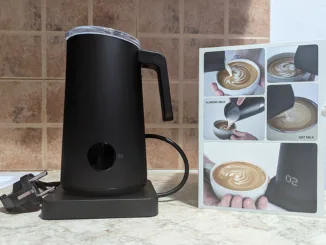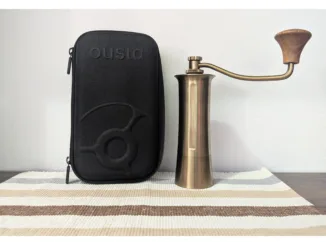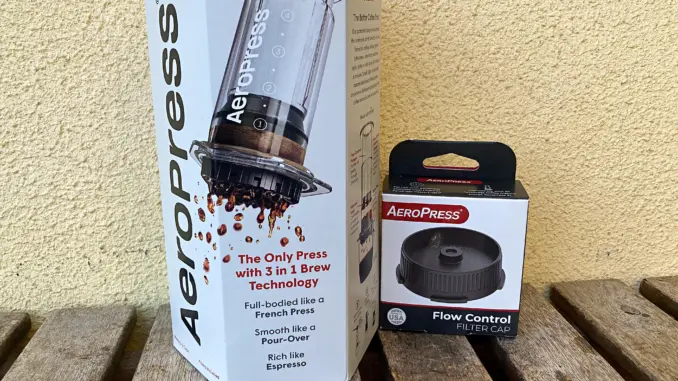
We try out the new Flow Control Filter Cap from AeroPress, including testing it out to brew espresso.
BY TANYA NANETTI
SENIOR ONLINE CORRESPONDENT
Photos by Tanya Nanetti
I’ve been a big fan of the AeroPress since the beginning of my career in the coffee world. I still remember the moment I finally bought one, almost 10 years ago, during a trip to the United States.
It was at a Blue Bottle Coffee shop in downtown Los Angeles—one of my first experiences drinking specialty coffee—and I had just had a cup of a fruity Ethiopia extracted with the device. It was smooth and almost creamy, slightly acidic and not at all bitter. … I had never tried anything like it before and desperately wanted to repeat the same experience at home.
Fast forward 10 years and here I am, still brewing with my AeroPress in all possible ways: regular, inverted and diluted, or as a cold dripper (with the help of the PuckPuck) or as something resembling a classic dripper (without the use of the plunger).
The only thing that never quite convinced me was the idea of using the AeroPress to brew a so-called espresso. I made a couple of attempts, but each time the result was too weak and watery—nothing like a classic espresso. So I went back to my usual recipes, more than happy to brew my cup full of delicious coffee. I didn’t care too much about all the alternative filter caps for espresso produced by different brands.
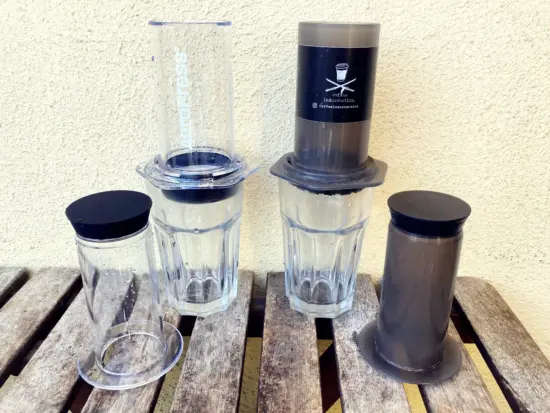
The Flow Control Filter Cap
That all changed when AeroPress announced the release of its Flow Control Filter Cap. It’s specially designed to brew something comparable to an espresso, thanks to a pressure-activating valve that stops dripping and creates more pressure during pressing. I definitely had to try it out!
Once I got the Flow Control Filter Cap (and the sleek new AeroPress Clear), I was ready to brew. I began with a simple question: What would happen if I brewed my usual AeroPress recipe using the new filter cap?
Armed with my classic AeroPress (with the original cap and a paper filter) and the new AeroPress Clear (with the Flow Control Filter Cap and a paper filter, which is still necessary to avoid clogging the valve), I started brewing the exact same recipe.
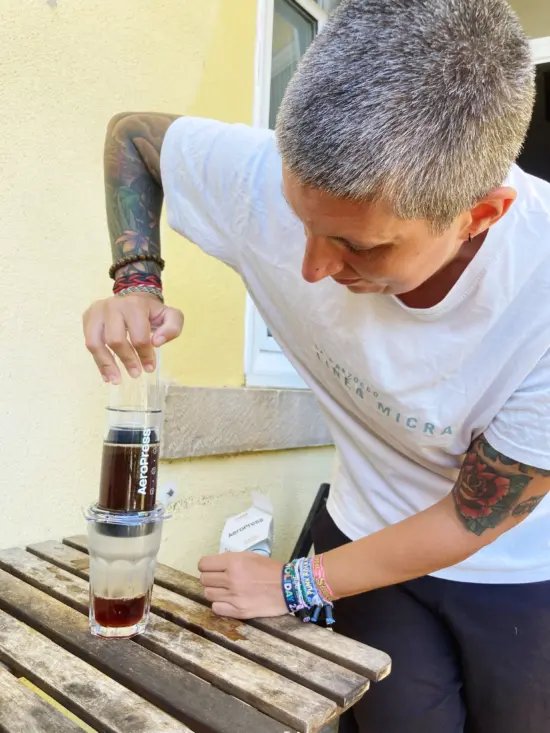
Trying Out Our Traditional Recipe with the Flow Control Filter Cap
My usual AeroPress recipe is 18 grams of light-roasted coffee (this time I used a delicious Colombian from Manhattan Coffee Roasters) ground medium-coarse (23 clicks on the Comandante Grinder), with 280 ml total water, followed by 30 seconds of blooming with 36 grams of water, then filling up to 280ml and closing with the plunger. With the classic stopper there is an urgency to create the vacuum—and to do it as fast as possible. With the new stopper, one can take as long as necessary, thanks to the valve that, with no pressure applied, does not let a single drop fall.
After a minute and 30 seconds, it was time for a small spin. Thirty seconds later (2 minutes total), I started pressing. I noted that the pressing was similar between the two devices. The valve added some resistance, but the pressing went smoothly, perhaps because the coffee was ground quite coarsely.
What was really interesting was the difference between the two coffees, both in taste and appearance. The “classic“ filter cap gave its usual slightly oily cup, with more body and more sweetness, but with a lower level of acidity. The Flow Control Filter Cap gave a visibly cleaner cup, with less oily residue and more lively, acidic notes. It was more reminiscent of a percolated extraction than a classic AeroPress cup.
Delighted and rather surprised by the result, I decided to do another experiment using the new cap for its main purpose: brewing something like espresso.
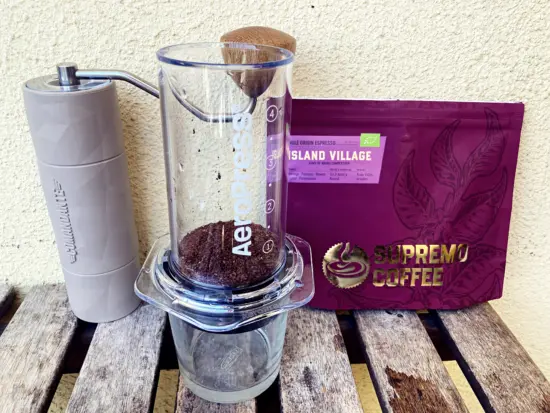
Trying Out Espresso with the Flow Control Filter Cap
After some research, I decided to use a dark roast for this experiment, as it can provide more crema. In my research, some people recommended not to grind too finely to avoid clogging the valve, while others suggested grinding very finely to get a more espresso-like taste.
Still unsure which suggestion to follow, I went for the darkest-roasted coffee I had (a medium-roasted arabica from India, roasted by Supremo Coffee). I decided to start with a not-too-fine grind (9 Comandante clicks) and see what happens.
The recipe was quite simple: Flow Control Filter Cap, paper filter, 18 grams of coffee, pour in 60 ml of water, stir vigorously for 30 seconds, close, and press.
This time, the valve offered more resistance. Pressing was more difficult, but the amount of coffee was so small that it only took a few seconds to press it all out. The result was rather watery and with just a hint of crema. So we decided to start all over again.
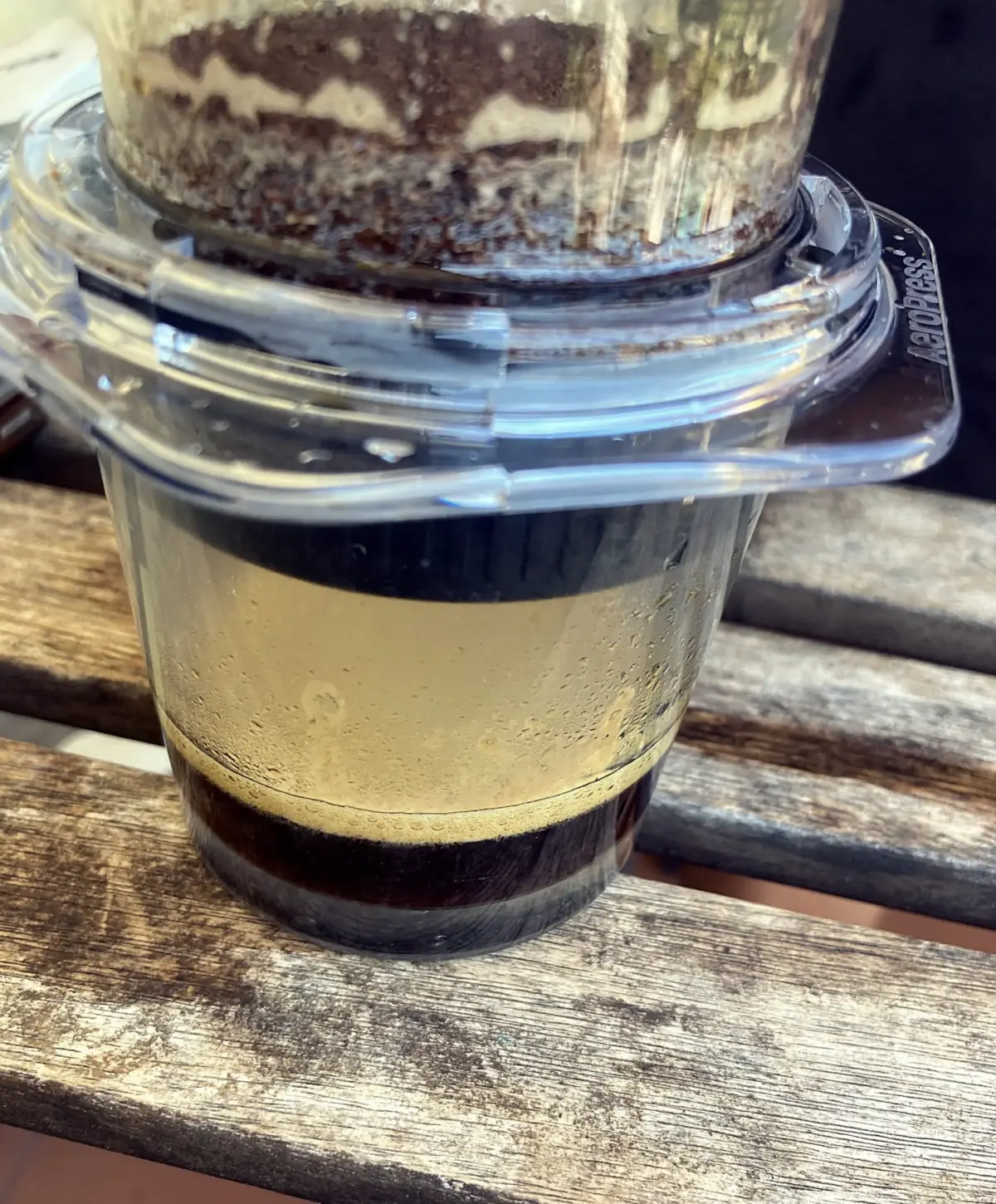
Espresso Results
This time, we repeated the same recipe with a finer grind (5 clicks), and the result was magical. The coffee came out with a thicker layer of crema and a delicious texture reminiscent of a long-brewed espresso (the one with a longer ratio, around 1:2.5). There was a pleasant acidity balanced by lots of sweetness—definitely not bad as a second experiment.
I ended the morning already overloaded with caffeine, ready to do more experiments in the coming days, but already extremely satisfied with the new Flow Control Filter Cap. I finally managed to extract espresso-like coffee with the AeroPress! But I also managed to improve on the classic AeroPress experience.
When it’s time to put the AeroPress back in its corner, the choice is already made. I feel sorry for the classic filter cap, but in my heart it has already been replaced by the new Flow Control Filter Cap!
ABOUT THE AUTHOR
Tanya Nanetti (she/her) is a specialty-coffee barista, a traveler, and a dreamer. When she’s not behind the coffee machine (or visiting some hidden corner of the world), she’s busy writing for Coffee Insurrection, a website about specialty coffee that she’s creating along with her boyfriend.

READ THE LATEST BARISTA MAGAZINE
Out now: It’s the October + November 2023 issue of Barista Magazine! Read for free with our digital edition. And for more than three years’ worth of issues, visit our digital archives here.
Get a hard copy of the magazine through our online store, or start a subscription for one year or two.


